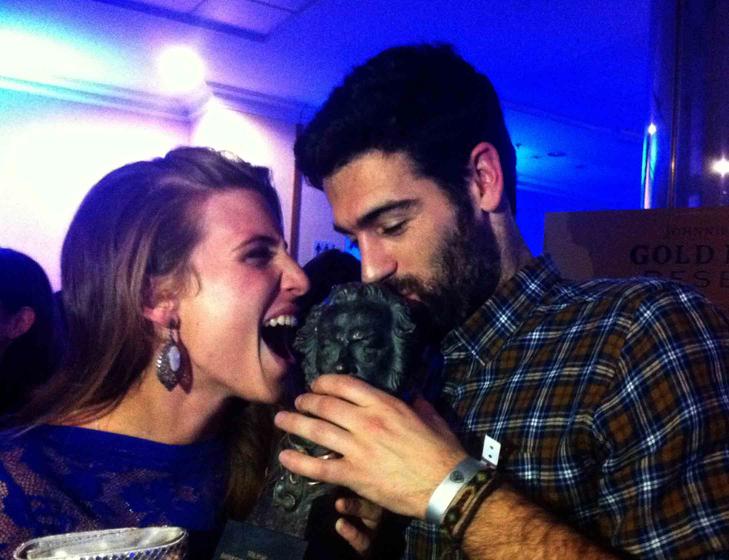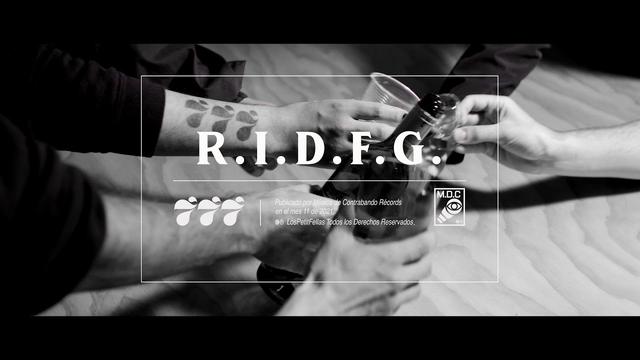Today we are publishing the conversation we have had with Paula Espuny, from Ursaone who has been involved in some of those productions that have kept us glued to the television in recent years.
Design, normally undervalued, provides a whole context that reinforces or weakens what is transmitted to us by what captures our attention. The settings, the costumes and all that accumulation of details that encompasses a simple scene -in addition to other aspects such as music- are responsible for providing credibility and transporting the viewer when they go to the movies or watch their favorite series, and just that. is what Paula takes care of. A creative process that goes more unnoticed than the work of those who act, but that treasures the same value.
Question: You studied in Seville and Madrid, but also in Cuba, and even a brief period in Budapest. What an experience.
Answer: I began my higher studies at the Complutense University of Madrid, which seemed to me very impersonal and theoretical when dealing with something as dynamic as Advertising and Public Relations. I changed in the third year to the Faculty of Communication in Seville, since it had only been open for 8 years and I had heard that it had a much smaller number of students and better resources. Last year I received the Erasmus scholarship in Romania and I was able to do an artistic exchange with students from the University of Budapest, which was something I really enjoyed. After a few years working, I continued my film training in Cuba. In San Antonio de los Baños they have one of the best film schools in the world. The level of the teaching staff is very high, the students are mostly Spanish-speaking and are used to having to get by without great means, they are people who are truly in love with cinema and they manage to infect you.
Q: You were clear on your goal, right? Your studies were focusing on the design and artistic direction of cinema.
A: What was clear to me from the first day of class at the university is that advertising was not for me. Devoting 5 years of my life to studying how to sell products they don't need to consumers generated a lot of controversy, which still happens to me today every time I accept an advertising project, no matter how interesting the set design is. Thanks to this lack of love, my career ended up being multidisciplinary, I listened to many other degrees: architecture, art history, literature, fine arts... A miscellany that has given me a wide range of vision when it comes to creating spaces. Before Cuba, I had never attended any official film course, beyond seminars during festivals or masterclasses by authors that interested me.
Q: Where does that artistic facet come from? Were you a movie buff growing up or is cinema just a way to channel your taste for design?
A: I have developed my artistic facet thanks to the unconditional support of parents who understand that passion should be the guide on each one's path. Regarding the movies, every night for as long as I can remember, my mother chose a movie to watch after dinner and fell asleep while we were fascinated by the window to the world that television represented. It was important to see all kinds of movies, not just the commercial. The spontaneity of the French Nouvelle Vague, the humanity and authenticity of Italian neorealism, the expression of feelings as a method of protest of German expressionism and its intricate set designs, shadows and lights, the infinite universe that Japanese cinema so different brings to the table. to our culture in so many aspects, including silent movies... All of that was a great source of influence for us, a deep reflection on what was happening beyond the horizon of a town as small as Osuna. I think that is where my interest in generating spaces that add to and accompany the script in the most realistic way possible comes from. On the other hand, I feel very attracted to many other artistic disciplines to which I would like to dedicate more time and which I develop alongside film projects.
Q: What does your job currently consist of? You have participated in art departments and in the artistic direction of large productions.

A: My job is to help the director materialize the spaces where the script has been imagined to take place. Sometimes we look for existing locations that have to be transformed and adapted to the story and other times we have to create them from scratch. After designing and building the space that is like a skeleton, we must add the life that they imply from the paint finishes to the furniture and smaller objects designed for each character according to their personality marked by the script. It is very interesting to put yourself in the shoes of each one of them, I enjoy thinking about what kind of books each one has on their nightstand, which painters would have a work at home, what kind of music they like to listen to and even what is there inside their fridges. It is a level of detail that may seem invaluable when you sit down to watch a movie, but when the characters move in spaces created with logic, care and affection where everything has a reason for being and why, that enriches it enormously and it shows. . Each project is literally a world.
Q: Speaking of cinema, is there any reference in your sector that inspires you when developing your work?
A: The list of art directors, designers, decorators, photographers, architects, sculptors, painters, illustrators, and builders that I have never met in person but that I have closely followed, studied, analyzed, and loved is endless. They have inspired me to develop my work. Some examples could be Eugenio Caballero, Es Devlin, Gary Card, Tim Yip, Lota de Macedo Soares, Peter Doig, Cedric Gibbons, Brigitte Broch, William Eggleston, Alexandra Ekster, Ken Adam... And many others, plus the ones I meet every day. On the other hand, there are those that I have been lucky enough to meet, such as Serafín González and Sara Natividad, whom I ran into in El Niño and both of whom have been my mentors from the beginning. They have guided me, advised me, encouraged me to fly from the nest without ever losing track (this is not an easy task) and taught me many of the tools that I will always continue to use.
Another of my references is Jesús Moreno, from Ursaón like me, with whom, in addition to origin, I share concerns, sometimes home, passion for the profession and a similar life path full of light. We are constantly learning from each other, accompanying us along the way, encouraging us to go a little further. Maybe I would have given up long before without someone like him around.
Q: From the outside it seems like a job sector that is difficult to access, how has your experience been?
A: In my case, as in the case of many other people, it was pure chance. Through some friends of my parents who came to Osuna looking for a quieter pace of life, I learned that it was a profession from which one could live and I tried it there, they gave me the necessary cable to start and I will always be grateful. . They presented me with great enthusiasm, which is something that always comes in handy, and from there came the proposal to be part of El Niño, where I met the artistic team with whom I would later do many other projects. I went to try my luck, to do the best possible whatever the task: I started by painting the porex hake that appear in the fish truck at the end of the film, ordering and cataloging the props they brought to the store, cleaning the brushes from the painters, moving the scene vehicle from one place to another and lending a hand in everything that came up. I was going to stay only in the part of Algeciras and I ended up going to Almería and Gran Canaria almost until the end of the film. I slept in hostels with shared rooms, I paid my allowances, I felt that it was worth continuing to be surrounded by those professionals and I tried to extend it as long as possible. From that vitality and eagerness to learn, other opportunities would arise and it would expedite the discovery of new paths that have brought me to where I am today.
Q: El Niño, Palm trees in the snow, Everybody knows, Yucatan, etc. and also other larger ones like Game of Thrones and Exodus: Gods and Kings. In addition to You don't leave here, Rosalía's work. There are intimidating names on that list, tell us what it's like to work on those projects.
A: For me, large-scale projects require the same dose of passion as smaller and more humble ones. The more media there are, the more fragmented the departments are, perspective is lost, you are part of a longer chain of work, there are more specialized people for each task, it is difficult to be a part of everything that happens, you are forced to delegate. While in "modest" projects (next to productions like Exodus or GOT, it's hard not to be) you are somehow present at every step, you live the process from start to finish, you are inevitably more involved, the team tends to be more involved each other and that is also very satisfying.
The improvement work on the Camino de Cantalejo concludes, which has involved an investment of 250,000 euros
Q: Which of them do you have the best memory of?
A: I appreciate each of them for some reason. They have all taught me, they have added me and have built the person and professional that I am today. But the magic of Exodus perhaps stands out, because of how impressive the magnitude of the project was, added to the vital moment in which I found myself, of a pure explosion of youth mixed with a bit of ingenuity and excessive enthusiasm. From some metal shells in Sierra Alhamilla, in the middle of the Almería desert, where I dedicated myself to photocopying plans and once again learning from everything and everyone who passed by, we gradually designed the layout of an Egyptian city whose construction process I was a direct witness and that filled me with emotion. Week by week I was seeing how the land was marked out, the stakes were driven in, the streets were delimited, the trees were planted and little by little the different spaces where the film would take place were raised: a spectacular royal palace with all the luxury of details and painted murals. by hand, different residential buildings along an avenue next to a square with different Egyptian shops, a temple with a colossal floor plan but only built up to a certain height and then finished in post-production, a ghetto with several alleys of shacks made of mud and straw on the outskirts of a monumental wall... All this on a real scale and with the corresponding setting by the decoration department, which was a real spectacle.
Q: What project are you currently working on?
A: Last week the filming of “Las Consecuencias” finished, the latest film by Claudia Pinto. It has been a very tough project between Valencia, La Gomera and La Palma, with a wonderful team from which I have also learned a lot. The main location where we built the house of one of the protagonists had a very complicated access, when the sea made it difficult for us to disembark, we had to access it on foot with the material on our backs along a long unpaved road and that has worn us down a lot physically. But I am very happy with the result, very grateful to the team and the local people who have helped us so much, I am looking forward to seeing the assembly and the fruits of so much effort on everyone's part. Now to recharge batteries with the family before the next battle.
Q: Tell us an anecdote about your work.
A: Purely by chance, it coincided that I went to see my family in Osuna to prepare for the filming of GOT at the sports center. I was very tired from another previous project and I had no intention of intervening but without wanting to, I ended up doing an interview and going to work the next day. It was my first time in the wardrobe department and I was a bit lost but I had a lot of fun. That was a parade of familiar faces, old classmates, teachers, old friends, even my brother Borja was there. One of those mornings, a man like the one you can find at any time appears on the streets of Osuna, recently arrived from the countryside with muddy boots, hunting pants, his face and hands dirty from having worked hard and as if by art. magic in a few minutes we transform him into the most believable and sophisticated nobleman of Meereen that you can imagine. We put on her a spectacular silk tunic with a scarf perfectly crossed and tied around her abdomen, a very heavy, exquisitely embroidered coat (which must have made the poor man feel hot...), some rings and some jewelry on her head and I don't know why. What but I was moved by that moment. It was like having brought the magic of cinema to the depths of my own roots, as if those two worlds so far apart at that moment became one, something very special being so far from home usually. I hope to be able to shoot many more things as close as possible to Osuna and my family.




